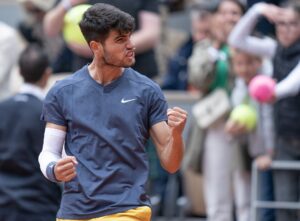The US Open, and men’s tennis in general, has mostly been an American monopoly for the greater part of Open Era. 19 of the 36 men’s singles winners, from 1968 to 2003, were Americans. And of the 72 finalists, 33 were Americans. But, ever since Andy Roddick’s title-winning run in 2003, there’s been a sharp decrease in the number of American male Grand Slam hopefuls. And now, fifteen years later, a 33-year old John Isner is proving to be a glimmer of hope for Americans.
Isner’s resurgence
Isner stellar run from March to July didn’t continue in August. Possibly because of investing his time and energy to defend the Atlanta title, the subsequent tournaments didn’t turn out great for him. He won just one match in August prior to the US Open. But, the reduced time on court certainly helped him regroup and find his game. At the US Open, Isner is looking like a better, deadlier version of himself, ready to go toe-toe with the big guys and take them out if he has to. He was largely going under the radar, needing two 3-hour matches to reach the Round of 16. But, it’s his threatening 5-set performance against Canadian Milos Raonic that consolidated his status as the most dangerous floater in the draw.
How did Isner fare against Raonic?
Isner served with power and precision, winning 86% of his first serve points. But it wasn’t the feared serve that took the game away from Raonic–it was Isner’s improved return. In their previous five encounters on tour, Isner had won only 29% of return points, breaking Raonic’s service only seven times in 74 games. That’s one break of serve almost every 11 games. This time though, he won 31% of the return points, attacking the second serve return at every opportunity he got. His 47% second serve return points won needed improvement, and it got what it needed. Isner won 50% of Raonic’s second serves, breaking him four times in 23 games.
Once he lost the first set, Isner’s attitude changed vastly, especially with him imposing his game with big forehands and even bigger serves. Raonic was often guilty of being passive in the rallies and Isner made sure he used every opportunity he got. Isner has worked hard on improving his groundstrokes, and the benefits can be seen in matches like these. More often than not, his groundstrokes, especially the forehands, are living up to his expectations. Moreover, Isner’s court coverage has massively improved this season as well, with him finishing points at the net a lot more than usual. Against Raonic, too, he won 29 points at the net with an astonishing 81% success rate. In tennis, playing the vital points better reaps rewards. Thus, it goes without saying, John Isner came up with the goods when he needed them most.
Can John Isner break the barrier?
John Isner’s next opponent in the quarterfinal is Argentine giant Juan Martin del Potro. Del Potro has by far looked the most threatening among top seeds, but if their latest hard court match-up is anything to go by, Isner will fancy his chances against Del Potro. Del Potro was looking equally threatening back in March when Isner halted his winning run with a crushing 6-1 7-6 win. Grand Slams are a different proposition for sure, and it’ll be incredibly difficult for the American get past Del Potro this time.
Since Roddick and Isner made the US Open quarters in 2011, this is only the second time an American man has reached the same stage, with Sam Querrey doing it last year. But, with his refined game, an improved mentality and pure, unadulterated crowd support, John Isner will be backing himself to do better than what is expected of him. American fans have a lot of hope on him, he knows it and he has the ability to do what’s needed to not let them down. John Isner might be 33 now, but for him, the Spring has only just begun!
Main Photo:
Embed from Getty Images






